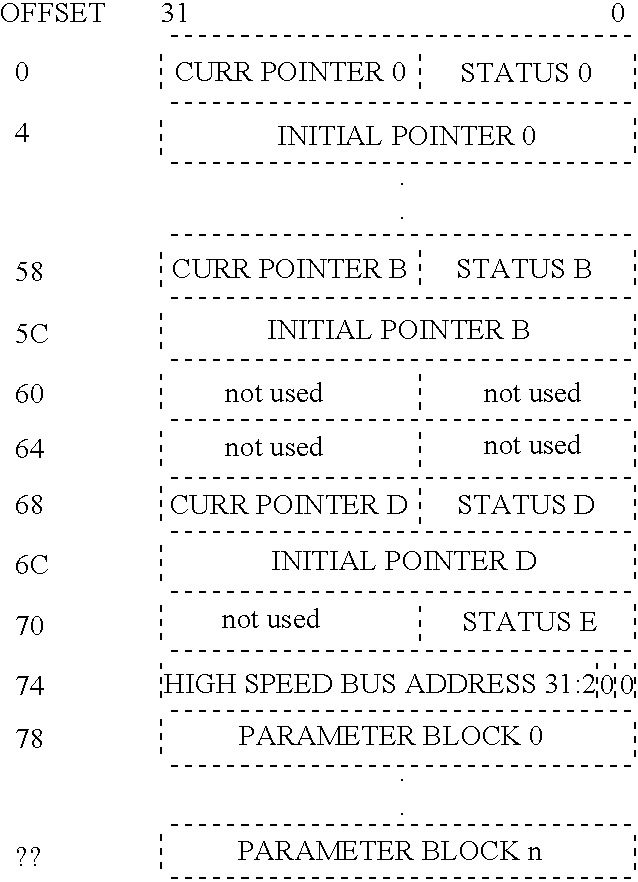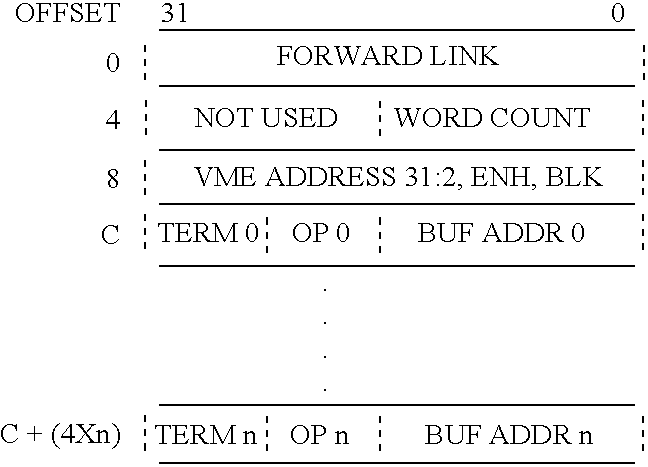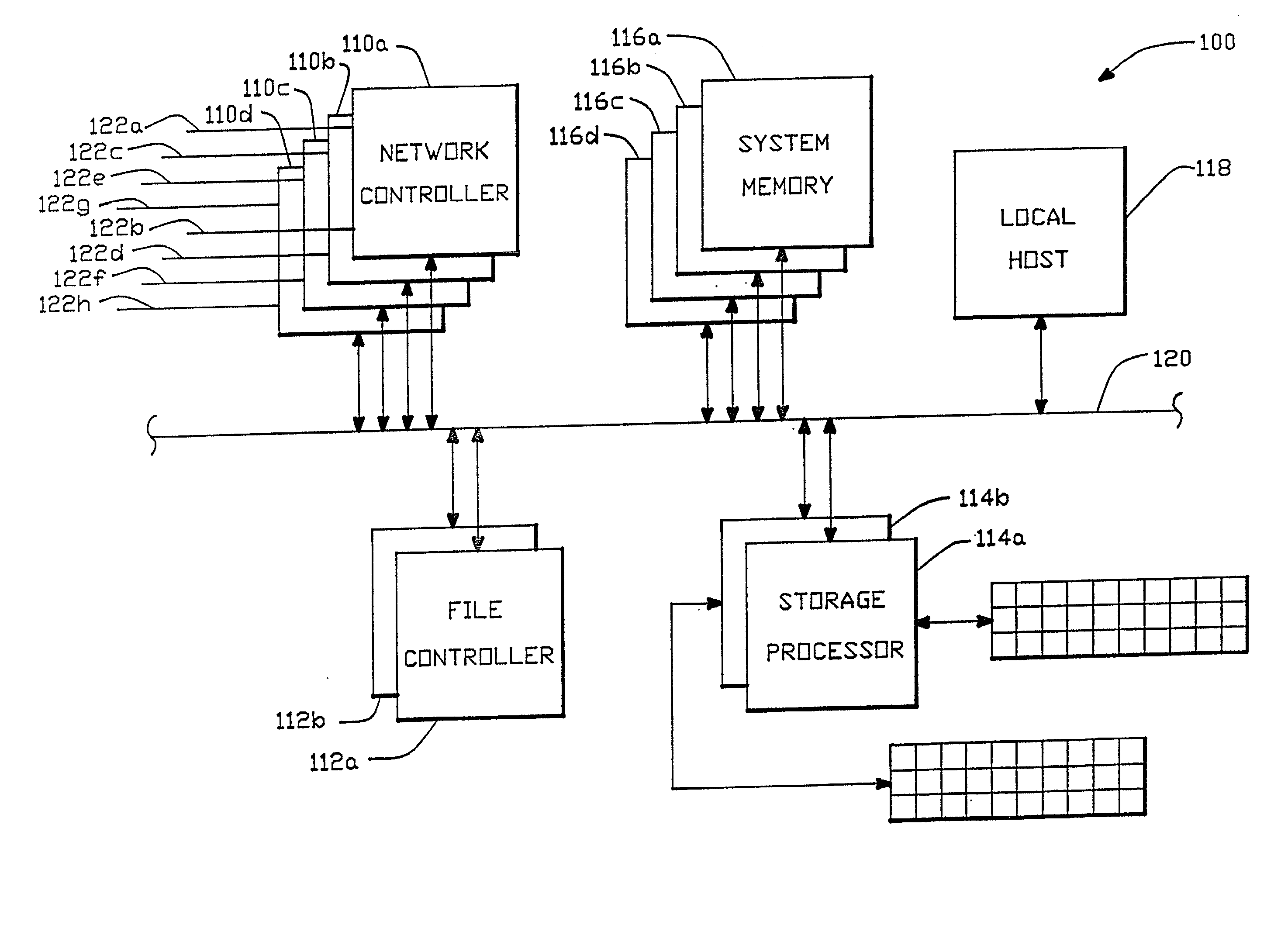Parallel I/O network file server architecture
a network file server and parallel technology, applied in the field of computer data networks, can solve the problems of inability to satisfy the appetite of remote servers for data, inconvenient nfs, and limited potential performance available to workstation users
- Summary
- Abstract
- Description
- Claims
- Application Information
AI Technical Summary
Problems solved by technology
Method used
Image
Examples
Embodiment Construction
[0061] In FIG. 2 there is shown a block diagram of a network file server 100 according to the invention. It can include multiple network controller (NC) boards, one or more file controller (FC) boards, one or more storage processor (SP) boards, multiple system memory boards, and one or more host processors. The particular embodiment shown in FIG. 2 includes four network controller boards 110a-110d, two file controller boards 112a-112b, two storage processors 114a-114b, four system memory cards 116a-116d for a total of 192 MB of memory, and one local host processor 118. The boards 110, 112, 114, 116 and 118 are connected together over a VME bus 120 on which an enhanced block transfer mode as described in the ENHANCED VMEBUS PROTOCOL application identified above may be used. Each of the four network controllers 110 shown in FIG. 2 can be connected to up to two Ethernets 122, for a total capacity of 8 Ethernets 122a-122h. Each of the storage processors 114 operates ten parallel SCSI bu...
PUM
 Login to View More
Login to View More Abstract
Description
Claims
Application Information
 Login to View More
Login to View More - R&D
- Intellectual Property
- Life Sciences
- Materials
- Tech Scout
- Unparalleled Data Quality
- Higher Quality Content
- 60% Fewer Hallucinations
Browse by: Latest US Patents, China's latest patents, Technical Efficacy Thesaurus, Application Domain, Technology Topic, Popular Technical Reports.
© 2025 PatSnap. All rights reserved.Legal|Privacy policy|Modern Slavery Act Transparency Statement|Sitemap|About US| Contact US: help@patsnap.com



